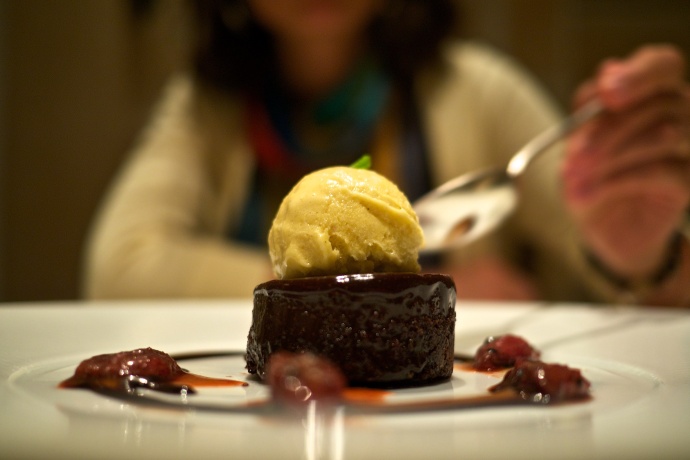Years ago, in the late nineteenth century, a rich nobleman, Sir Nawab Vikar-Ul Umra, built a palace in the shape of a scorpion on a hill, overlooking the city of Hyderabad. It was called Palace Falaknuma. The lavish palace was so admired by the sixth Nizam of Hyderabad, Mehboob Ali Pasha, that Sir Vikar, the Nizam’s brother-in-law, offered it to him as a gift. The Nizam took up residence at the palace, immersing himself and his family in its luxury and opulence. His library, a replica of the one at Windsor Castle, housed rare books and manuscripts, and even a renowned collection of the Holy Quran, all of which he collected on his travels. On the walls of the large dining room with seats for one hundred guests were murals, each one of which depicted a different type of food—pheasant and fowls on one panel, overflowing fruit bowls on another. It was said that the Nizam would merely point to the pictures of the foods he desired, and the cooks would immediately prepare elaborate dishes with his selected ingredients for him and his dining companions. A room decorated entirely with jade served as a sitting parlor; nearby ladies quarters contained circular “gossip” couches while in the billiards room, camel-leather chairs were occupied by men, smoking and sipping liquor from the Nizam’s extensive collection. Life in the palace took place above the hustle and bustle of everyday Hyderabadi life; the Nizam and his family looked down over their manicured gardens and could only guess, abstractly, at the fears and pleasures, the hopes and dreams, of the ant-like citizenry below.
Today, over a century later, the luxury hotel chain Taj Resorts has meticulously restored the Palace to its former stateliness. The oil in the Moroccan-style lamps that suspend from the portico’s ceiling has been replaced with light bulbs and there are sockets in the walls, yet there remains the feeling that a beautifully dressed princess, or dapper prince, may emerge from one of the ornate bedrooms that wrap around the perimeter of the palace.
We are here for dinner, which begins with a tour of the palace. A young woman guides us around, pointing out the writing desk where an enormous diamond once served as the Nizam’s paperweight and leading us into a dark room containing numerous sets of the royal family’s flatware—mainly English bone china interspersed with greenish-tan Chinese ceramics—and various pieces of tarnished silverware. The tour finishes in the inner courtyard, and we walk alongside the softy lit ponds that run through its center towards the restaurant, Adaa. We pass a private party taking place in one of the courtyard’s side gardens, where lanterns hang and we can hear boisterous laughter and notes of music, a drum beating. It is enchanting, and for yet another time on this trip, we are transported back in history—this time to a bygone era of lavish royal parties, Turkish princesses marrying Mughal princes, stately dinners with only the finest of crystal and best cuts of meat, the visiting of European monarchs, walks about the gardens, high tea on the veranda.
Our meal at Adaa is delicious. We are served South Indian style lobster, in a rich flavorful tomato sauce, tender lamb that falls off the bone with the slightest touch of our forks, accompanied by coriander and mustard seed-flecked green beans and potatoes. “Eggplant three ways” provides us finally with a taste of that delicious dish that is baingan bharta, served with slightly smoky, fresh out of the tandoori oven naan. We gaze out onto the twinkling lights of Hyderabad below, glancing at the large party dining al fresco on the veranda, table candles flickering in the still-warm evening air. They sip wine, nibble on papadums, and there is a sparkling quality to the tableau in front of us, a sense of sprinkled fairy dust. Not entirely unlike the magic of our own wedding dinner just a few months ago. After dinner we walk out of the Palace’s front entrance, past two white horses in royal regalia, their silver buckles catching the light from the glowing bulbs of the old-fashioned style street lamps. We are ferried via golf cart down the hill back to our car, where our driver Abu awaits, opening the door for us, ready to take us back through the dusty streets and honking traffic of the old city.

